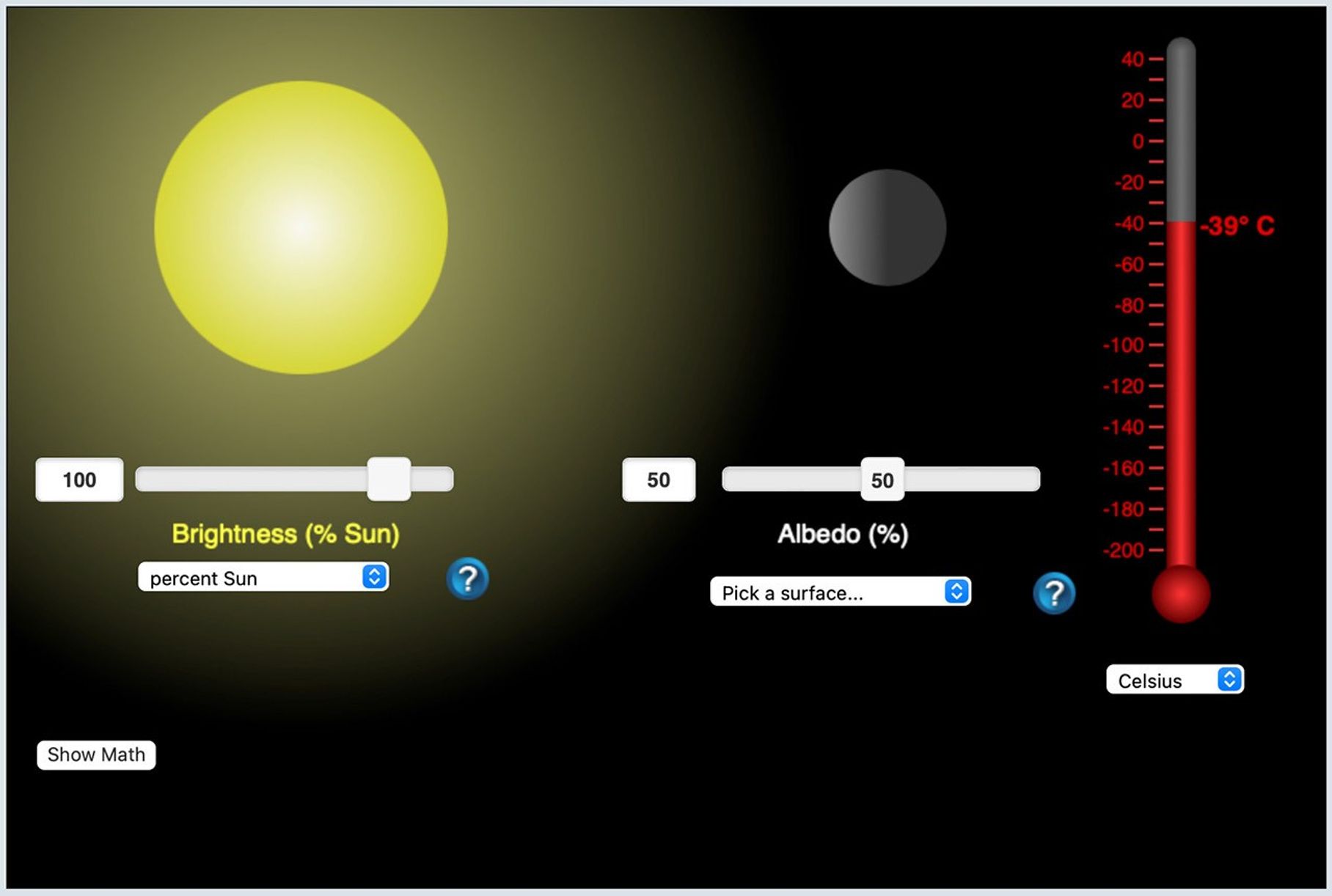Intermediate Guiding Question
Is the Sun getting hotter?
Big Idea 1.3
Educator Background
-
The Sun's core is more than 27 million degrees Fahrenheit and will remain at that temperature until it runs out of fuel in approximately 4.5 billion years. When it runs out of fuel, it will slowly cool to an object called a white dwarf, which is a dense, cool object that is only 90,000 degrees F. While the temperature of the Sun has changed over a time-scale of billions of years, the temperature of the Sun does not impact short-term climate change. Even though daily fluctuations in the radiation levels from the Sun may impact weather, this does not produce climate change.
-
Learning Constraints
At the middle level students are beginning to differentiate between thermal motion and radiation, and learn that radiation carries energy, which can be absorbed to produce heat (MS-PS1-4, PS3-3,4). Students also explore weather, climate, and the human impact of changes on Earth's energy budget (MS-ESS2-6, ESS3-3, ESS3-5).
-
Connect to Heliophysics
Connect to the Sun by emphasizing to students that the Sun's energy gets to Earth via solar radiation and that Earth has an energy budget based on the amount of incoming and outgoing solar radiation. The Sun warms Earth's atmosphere, which drives Earth's weather systems. While the Sun is not getting hotter, the amount of radiation being trapped in Earth's atmosphere is increasing due to the burning of fossil fuels. When heat can't escape Earth's atmosphere, changes to Earth's energy budget causes rapid climate change, at a rate in which biological life has trouble adapting. At the dawn of life, at about 3.8 billion years ago, the Sun was 30% dimmer, but there were more greenhouse gases, which kept Earth from freezing.
-
Extend Exploration
Extend student exploration by emphasizing that an important aspect of Earth's energy budget is how much ice is on Earth. Ice reflects solar radiation back into space, which helps cool Earth. The warmer Earth becomes, the less ice will be on Earth, and the warmer Earth becomes. This is called a positive feedback loop. Periods during Earth's history, known as ice ages, are also not caused by increased solar radiation, or from the Sun getting hotter, but from changes to Earth's atmosphere from volcanic activity (MS-ESS2-1).
-
Differentiate for Beginner Learners
To support beginner students, ask students to explain the difference between weather and climate with examples (3-ESS3-2).
-
Differentiate for More Advanced Learners
Challenge students at the next level by exploring how Earth's orbit has changed over time, which has also affected Earth's climate.

NASA Measures All the Sun's Energy to Earth
Video Length: 1:35
Search the rssource database for more videosRecommended Resources
Explore this guiding question with these intermediate level resources.
Heliophysics Resource Database
Use the guiding question above to explore resources at this level or go directly to our database to search for resources by level, NGSS performance expectation, topic, and mission.
Resource Database



























